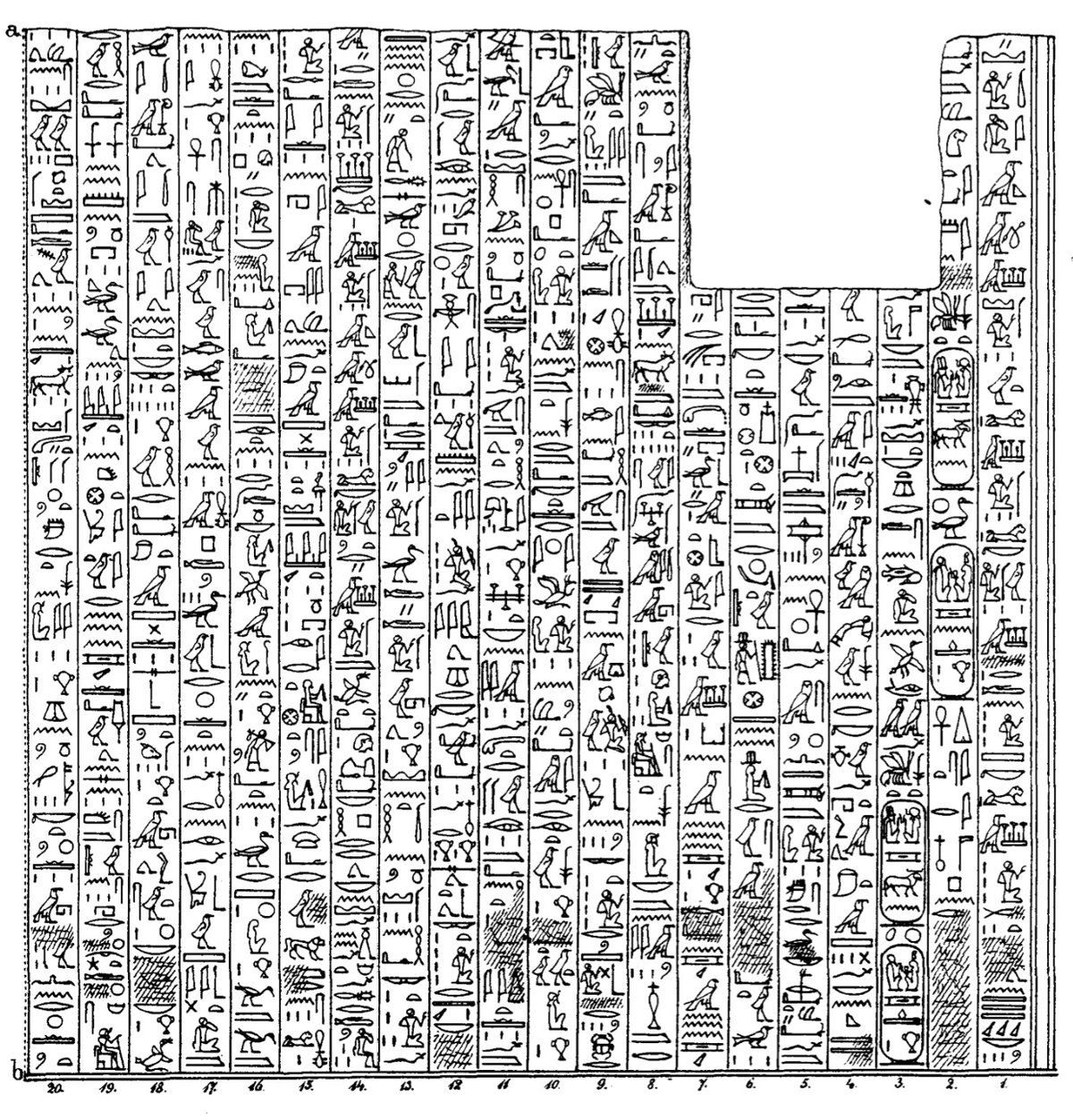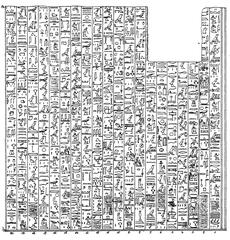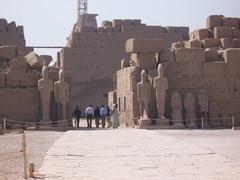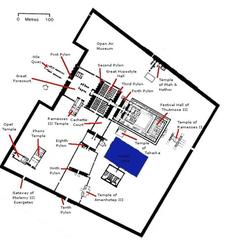
Cachette Court Visiting Hours, Tickets, and Comprehensive Guide to Luxor’s Historical Sites
Date: 14/06/2025
Introduction
Cachette Court, located within the magnificent Karnak Temple Complex on Luxor’s east bank, is a vital testament to the religious, political, and artistic legacy of ancient Egypt. Renowned for the discovery of the Karnak Cachette—an unparalleled hoard of statues and ritual objects—this court offers visitors a unique window into thousands of years of Egyptian civilization. This guide delivers a thorough overview of Cachette Court’s history, archaeological significance, practical visitor information, and tips for experiencing Luxor’s iconic sites.
Table of Contents
- Introduction
- History and Discovery of Cachette Court
- Archaeological Significance and Notable Artifacts
- Visiting Cachette Court: Hours, Tickets, and Access
- Practical Tips and Travel Information
- Cultural and Religious Context
- FAQs
- Visual and Media Suggestions
- Summary and Visitor Essentials
- Sources
History and Discovery of Cachette Court
Origins and Historical Context
Cachette Court is integral to the Karnak Temple complex, a spiritual center constructed primarily during the New Kingdom, with significant expansions by Amenhotep III and later pharaohs. The court originally served as a grand open space for religious ceremonies, processions, and royal rituals connected to the Theban Triad: Amun, Mut, and Khonsu (Wikipedia).
The Karnak Cachette Discovery
In 1903, French Egyptologist Georges Legrain uncovered a massive cache of artifacts in Cachette Court, fundamentally transforming our understanding of temple rituals and Egyptian art. Buried intentionally—likely during times of religious or political upheaval or as part of temple renovations—this cache included over 800 stone statues, 17,000 bronze objects, and numerous ritual implements. The find spanned nearly three millennia, representing both royal and non-royal figures (Egypt Museum, EgyptaTours).
Additional discoveries, such as the 1989 Luxor Statue Cache within the Luxor Temple’s solar court, further highlight the region’s archaeological richness (Adept Expeditions).
Archaeological and Historical Significance
The diversity of the cachette’s contents—from pharaohs like Thutmose III and Amenhotep III to priests and deities—reflects the evolving religious landscape and Karnak’s central role in Egyptian society. Archaeologists believe the burial was an act of protection or ritual cleansing, ensuring the sanctity of the temple precinct during periods of change or threat (Nile Scribes).
Archaeological Significance and Notable Artifacts
Range and Importance of Discoveries
- Statues: Exceptional pieces include the greywacke statue of Thutmose III, sculptures of Amenhotep III, Hatshepsut, and representations of gods such as Amun and Mut (Egypt Museum).
- Bronze Artifacts: Over 17,000 bronze objects, including votive statuettes and ritual tools, showcase the metallurgical skill and religious devotion of ancient Egyptians.
- Ritual Objects: Offering tables, libation vessels, and inscribed stelae reveal details about ceremonial practices and temple life.
Artifacts from the cachette are displayed at the Luxor Museum and the Egyptian Museum in Cairo, with many items also housed in international collections (EgyptaTours).
Preservation and Modern Research
Legrain’s meticulous documentation set a standard for early 20th-century archaeology. Today, advanced technologies such as digital mapping and 3D modeling have furthered research into the cachette’s original layout and the context of its finds (Nile Scribes). Recent excavations continue to yield new insights, with ongoing discoveries like the tomb of Thutmose II near Luxor (Archaeology Magazine).
Visiting Cachette Court: Hours, Tickets, and Access
Location and Entry
Cachette Court lies near the First Pylon and Great Court within the Karnak Temple complex, about 3 km north of Luxor city center. The site is easily accessible by taxi, private car, or organized tour (The Discoveries Of).
Visiting Hours
- Typical hours: 6:00 AM to 5:30 PM (winter); extended to 6:00 PM (summer).
- Luxor Temple: Also open daily from 6:00 AM to 10:00 PM, often included in combined itineraries.
- Luxor Museum: Usually open 9:00 AM to 5:00 PM, with extended hours in peak season (Audiala).
Check official sources before your visit, as hours may vary (Wandering Wheatleys).
Ticket Information
- Karnak Temple (including Cachette Court):
- Standard adult: ~EGP 200
- Student discounts available
- Tickets can be purchased at the main entrance or through authorized online platforms (The Discoveries Of).
- Luxor Museum: ~EGP 140 for adults (Audiala)
Accessibility
The main precincts of Karnak Temple and Cachette Court feature wide, flat stone pathways, but some areas have uneven surfaces and steps. Ramps and designated paths are available in select sections; wheelchair users may need assistance (Audiala). Audio and private guided tours can be arranged for enhanced accessibility and deeper insights.
Guided Tours
Multilingual guides trained in Egyptology are available for hire at the entrance. Private and group tours can be arranged in advance or onsite (Intrepid Scout).
Practical Tips and Travel Information
- Best Time to Visit: October to April offers milder temperatures and fewer tourists. Early mornings and late afternoons provide optimal conditions for exploration and photography (Intrepid Scout).
- Dress Code: Modest, lightweight clothing is recommended. Protect yourself from the sun with hats, sunglasses, and sunscreen.
- Facilities: Restrooms, shops, and cafés are located near entrances. Benches and shaded areas are available throughout the site.
- Safety: The site is patrolled by tourist police; standard travel precautions apply (UK Government Travel Advice).
- Photography: Allowed in most areas; flash and tripods may require special permissions.
Getting There
- By Air: Luxor International Airport is 8 km from the city center, with taxis and transfers available (Egipto Exclusivo).
- By Train: Luxor station connects to major Egyptian cities.
- By Nile Cruise: Many cruises include stops at Karnak and Cachette Court.
Cultural and Religious Context
Cachette Court was central to Karnak’s religious life, hosting processions and festivals such as the Opet Festival, where statues were paraded to Luxor Temple to reaffirm the divine authority of the pharaoh (Time Travel Turtle). The artifacts reflect both royal and private devotional practices, and their intentional burial speaks to ancient beliefs about ritual purity and protection.
Luxor’s local guides, often from families with generational ties to the region, add depth to the visitor experience through personal stories and traditions (Wandering Wheatleys).
Frequently Asked Questions (FAQs)
Q: What are the Cachette Court visiting hours?
A: Generally 6:00 AM to 5:30 PM (winter), with extended hours in summer; check for seasonal updates.
Q: How much do tickets cost for Cachette Court?
A: About EGP 200 for adults; discounts for students. Includes access to the entire Karnak complex.
Q: Is Cachette Court accessible to wheelchair users?
A: Main pathways are accessible, but some areas require assistance due to uneven terrain.
Q: Are guided tours available?
A: Yes, at the entrance and via tour operators; private and multilingual guides are recommended.
Q: Can I take photographs at Cachette Court?
A: Yes, but flash and tripods may require special permission.
Q: Where can I see artifacts from Cachette Court?
A: Many are displayed at the Luxor Museum and Egyptian Museum in Cairo.
Visual and Media Suggestions
- Include images of statues, reliefs, and the Karnak Temple architecture with keyword-rich alt text (e.g., “Cachette Court statues at Karnak Temple, Luxor”).
- Offer interactive maps or virtual tours to help visitors plan their route through the complex.
- Videos or festival reenactments can illustrate the temple’s ceremonial functions.
Summary and Visitor Essentials
Cachette Court at Karnak Temple provides an unforgettable journey through Egypt’s spiritual and artistic history. The cache’s statues and artifacts have revolutionized our understanding of ancient ritual and art, and the site remains an essential destination for scholars, travelers, and anyone eager to experience Luxor’s living heritage. Plan your visit with attention to practical details—hours, tickets, accessibility, and respectful conduct—to maximize your enjoyment and appreciation.
For more guidance, download the Audiala app for personalized audio tours and up-to-date visitor advice. Explore related articles and stay connected with Egypt’s wonders via our website and social channels.
Sources and Further Reading
- Luxor statue cache, 2024, Wikipedia
- Buried Relics in Luxor Museum - A Virtual Tour with Anyextee, 2024, Adept Expeditions
- Statue of Thutmose III, 2024, Egypt Museum
- Five Things to See at Karnak, 2018, Nile Scribes
- Long-Lost Tomb of Pharaoh Thutmose II, 2025, Archaeology Magazine
- Karnak Temple Egypt Guide, 2024, The Discoveries Of
- Karnak Temple Guide, 2024, Intrepid Scout
- Karnak Cachette, 2024, Egypt Tours Portal
- The Karnak Cachette, 2024, EgyptaTours
- Visit Karnak Temple, 2024, Time Travel Turtle
- Guide to Luxor, Egypt, 2024, Wandering Wheatleys
- Luxor Museum, 2024, Audiala
- Best Things to Do in Luxor, 2024, Earth Trekkers

































































